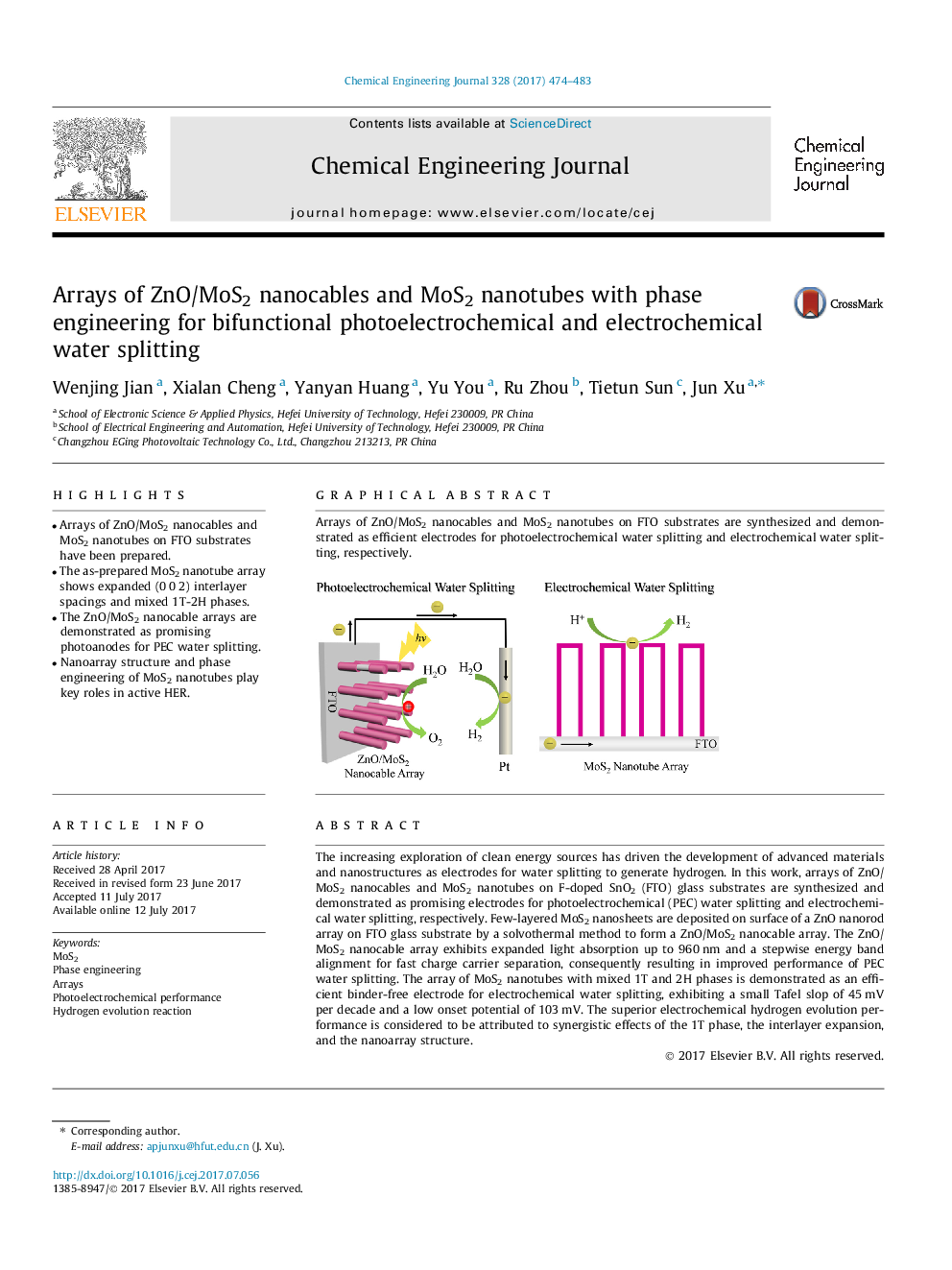| Article ID | Journal | Published Year | Pages | File Type |
|---|---|---|---|---|
| 6465359 | Chemical Engineering Journal | 2017 | 10 Pages |
â¢Arrays of ZnO/MoS2 nanocables and MoS2 nanotubes on FTO substrates have been prepared.â¢The as-prepared MoS2 nanotube array shows expanded (0 0 2) interlayer spacings and mixed 1T-2H phases.â¢The ZnO/MoS2 nanocable arrays are demonstrated as promising photoanodes for PEC water splitting.â¢Nanoarray structure and phase engineering of MoS2 nanotubes play key roles in active HER.
The increasing exploration of clean energy sources has driven the development of advanced materials and nanostructures as electrodes for water splitting to generate hydrogen. In this work, arrays of ZnO/MoS2 nanocables and MoS2 nanotubes on F-doped SnO2 (FTO) glass substrates are synthesized and demonstrated as promising electrodes for photoelectrochemical (PEC) water splitting and electrochemical water splitting, respectively. Few-layered MoS2 nanosheets are deposited on surface of a ZnO nanorod array on FTO glass substrate by a solvothermal method to form a ZnO/MoS2 nanocable array. The ZnO/MoS2 nanocable array exhibits expanded light absorption up to 960Â nm and a stepwise energy band alignment for fast charge carrier separation, consequently resulting in improved performance of PEC water splitting. The array of MoS2 nanotubes with mixed 1T and 2H phases is demonstrated as an efficient binder-free electrode for electrochemical water splitting, exhibiting a small Tafel slop of 45Â mV per decade and a low onset potential of 103Â mV. The superior electrochemical hydrogen evolution performance is considered to be attributed to synergistic effects of the 1T phase, the interlayer expansion, and the nanoarray structure.
Graphical abstractArrays of ZnO/MoS2 nanocables and MoS2 nanotubes on FTO substrates are synthesized and demonstrated as efficient electrodes for photoelectrochemical water splitting and electrochemical water splitting, respectively.Download high-res image (68KB)Download full-size image
